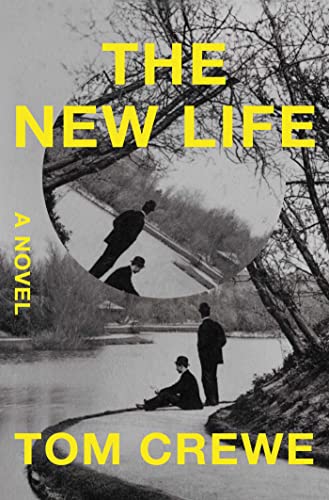and
Prince Eddy and the Homosexual Underworld, by Theo Aronson


Since characters in the fictional book are real people in the non-fictional book, I thought I’d write about both books. In The New Life I only suspected a short way into the book that the characters might be based on real life people, because the sections are given dates and they are marching, unbeknownst to them, into a thicket — maybe even disaster — of events that will change gay rights and gay consciousness for decades to come. That is, the trial of Oscar Wilde for “gross indecency,” which was the legal term for sodomy or sex between 2 (or more I suppose) men. It concerns John Addington Symonds who was famous for a number of things but very importantly, his translations of Michaelangelo’s sonnets to Tomasso Cavalieri, in which he restored the male pronouns that had been made female by earlier editors. He was married and had four children, but he was also gay and he knew it. He also believed it was normal. In this novel, he and another man, Henry Ellis, decide to write down some real cases — a kind of “In their own words,” as a scientific exploration. But then the trial hits in 1895, gay men start fleeing to France for their own safety, and these two, though they are still eager to try to publish their book, get into trouble when the police find a copy.
Anyway this coincides with roughly the same time period as Prince Eddy’s involvement in what was called The Cleveland Street scandal. The non-fiction book about Prince Eddy is quite dense and it took me a strangely long time to get through it. There’s so much that you have to try to understand about life in Victorian England, such as the casual nature of sex between young boys and older men in exchange for money. (Prostitution, duh). But the messenger boys were not allowed to carry their own money so that it would not mix in with the money from the clients. But one day, a kid named Swincow was discovered with 21 shillings on him, and suspecting that he stole it, forced him to reveal how he got it. It happened because he was prostituting at a Cleveland Street brothel where men could sleep with boys.
Anyway, this book, which goes over many years of Prince Eddy’s life, shows, I think pretty conclusively, that Prince Eddy did visit the Cleveland Street brothel and was probably gay. Although he was the eldest son of Victoria’s heir (George, the Prince of Wales), he was lethargic and some say, inept. He would not have made an interesting king or even a competent one. He was engaged to May, but he died before their marriage could take place, so the heir went to the spare, as they say, and George eventually married Eddy’s fiance. They became King George and Queen Mary, and they had their famous sons: Edward, the Nazi sympathizer who abdicated to marry Wallace Simpson, and another George — the one with the stutter depicted in The King’s Speech, who married Elizabeth, the Queen mother. Those two gave birth to Elizabeth, and then in she to the current King Charles, undergoing cancer treatment, his son William and Harry, the pariah, and then I guess another George will eventually come along, If the monarchy survives.
But I think what really comes off well in this interesting study of someone who never became king, and why it’s almost certain that Eddy did enjoy the young men at Cleveland Street, is how much effort the royalists and sympathizers went to make sure there was never a chance that Prince Eddy would have to speak on the matter. The prostitutes were given extremely lenient sentences. They never tried to prosecute the proprietor, who I think had fled the country, and most of the wealthy who were definitely known to have been, were never charged with anything.
It makes you wonder why, in 1895, they did go after Oscar Wilde and there are some suggestions that he caused it himself. He didn’t flee to Europe when he had the chance to. (He ended up there anyway.)
